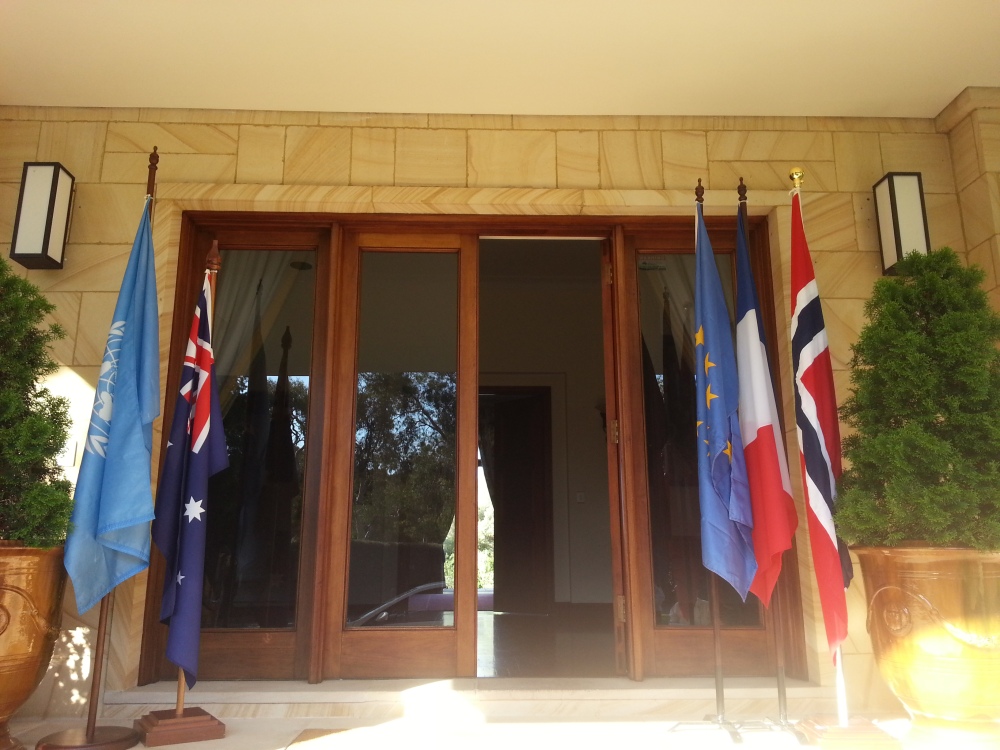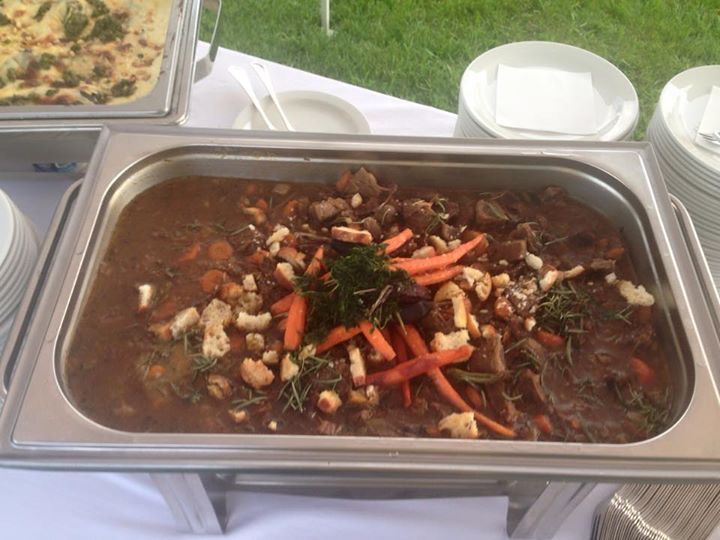
I Went To Canberra To Eat Delicious French Food And Raise Awareness About Food Waste
This article originally appeared in The Vocal.
I was let into the French Embassy in Canberra by Pierre, a young intern studying Public Affairs in Paris. He led me up to the main building at the top of a small hill next to Parliament House. I had jumped at the chance to travel down to Canberra from Sydney to take part in an event put on by the embassy marking the start of the COP21 global climate change meeting in Paris, being both a climate wonk and a curious outsider hoping for a brief glimpse into the secret life of Canberra’s public servants and diplomats.

Through the building – a typically Canberra, 1950s sandstone and plaster take on a modest French chateau – I emerged onto a beautiful, green lawn with glimpses through the gum trees over Lake Burley Griffin and the mountains beyond.
The oversized LED clock counting down on the patio behind me indicated that in just under two hours guests would be arriving and, on the other side of the world, COP21 would be getting underway.
Pierre showed me to the kitchen where I got to work helping chefs from the nearby National Press Club as they prepared for the festivities.
Arriving guests were greeted with our canapes consisting of tuna nicoise en croute bursting with flavour and a light carrot flan with asparagus and a fresh, zesty pesto.

As the countdown clock reached zero and the speeches espousing the importance of meaningful outcomes on climate change at COP21 began, it was time for the mains. Picture melt-in-your-mouth beef bourguignon with Dutch carrots; handmade vegetarian lasagne with a delicious creamy bechamel sauce, eggplant and toasted pine nuts; braised barley with roasted fennel; potato gratin. And the pièce de résistance: a mind-blowing Grand Marnier Panettone bread and butter pudding with blueberries.

Why am I at such pains to describe the menu to you? Well because despite being quality food of the kind I imagined these guests would enjoy regularly, almost all of the ingredients used had been rescued from local supermarkets and cafes over the last couple of days by food rescue organisation OzHarvest; food that would otherwise have been thrown out.
If the idea of feeding politicians, bureaucrats and diplomats food that would otherwise have gone to landfill gives you a perverse sense of satisfaction, it shouldn’t (ok, maybe just a bit) because most of the food that supermarkets, cafes, restaurants and households throw out every day is perfectly edible and can be turned into top quality meals.

That’s why OzHarvest (and me, luckily) had been invited by the embassy to prepare the menu for the event as part of its Think.Eat.Save campaign. They wanted to show just how tasty food waste can be and that reducing the huge amounts of food we throw away or lose every day is important for lowering our emissions and tackling climate change.
Here’s an insane fact. Every year roughly one-third of the food produced in the world for human consumption is wasted. That’s 1.3 billion tonnes.
If food waste was a country it would be the third largest emitter of carbon in the world behind China and the US.
And, I’m sorry to say it Australia, but we’re some of the worst offenders. Food waste here costs us up to $10 billion a year and despite producing enough food to feed approximately 60 million people, 2 million Australians still rely on food relief every year.
How does this happen?
Supermarkets throw out heaps of fruit and veggies every year (20-40% in fact) before they even hit the shelves because they don’t meet strict cosmetic standards, despite being perfectly fine. We also tend to buy too much food and throw away what goes off. Indeed, Australians bin the equivalent of 1 in every 5 bags of groceries we buy.
So we waste a lot of food and it’s quite bad for the environment and climate but there are simple things we can do to reverse this:
- plan ahead when you buy your groceries to minimise buying too much
- avoid buying cheap 2 for 1 specials at supermarkets – only buy what you know you’ll eat
- consider buying fruits and veggies from supermarkets that now offer discounted “imperfect” produce like Woolworths’ ‘Odd Bunch’ or Harris Farm’s ‘Imperfect Picks’
- try and use all the food in your fridge and freeze leftovers – consider it a challenge!
- perhaps buy some of your fruit and veg at a local farmer’s market and learn about how it’s grown. Or even try growing your own at a local community garden, in your garden or on your balcony.
- if you’re a food business with regular excess produce, get in contact with your local OzHarvest office to arrange a regular pickup. Or suggest to your local food provider that they work with OzHarvest to reduce their food waste.
For the past 11 years, OzHarvest has rescued quality food from outlets across the country and donated it to less fortunate Australians as well as providing food education and cooking qualifications for underprivileged youth. In one way, their goal is to run themselves out of business by helping eliminate food waste.
As I left the embassy later in the evening (having tried the dishes on offer – hey, you’ve got to know the product you’re selling!) Pierre told me how surprised he was that such a delicious menu could be prepared with rescued food. It was a sentiment echoed by a lot of guests.
Events like this one suggest perhaps that one of the most important things we can do to help reduce food waste is to change the way we think about food: to enjoy it but also to see it and treat it as the valuable resource that it is.


